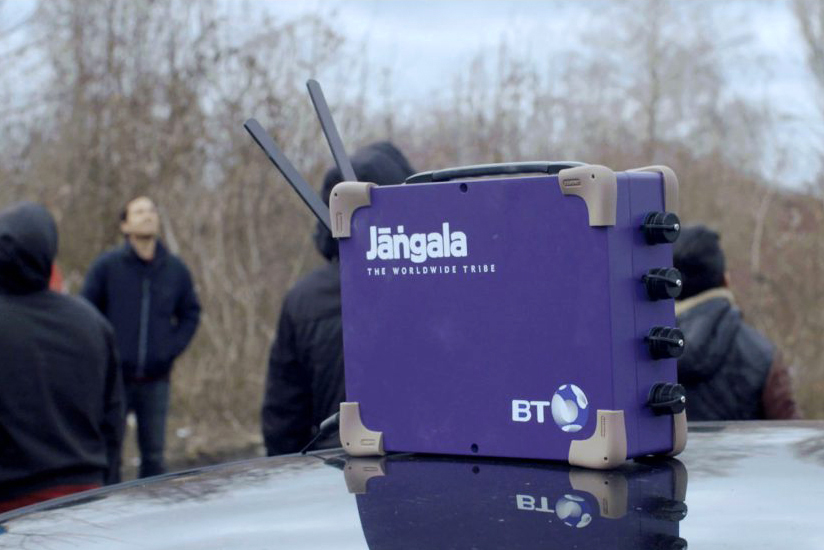A
Animism
Animism has continued to pose a serious riddle to Western epistemologies. While the evocation of life is a well-known effect in animated cartoons and digital animations, and in more delicate ways, in painting and sculpture, outside the territory of art and mass media, animation has been a disputed problem. Far from being a matter of abstract considerations, when animation is taken outside the field of art it becomes an ontological battleground that is at the frontier of colonial modernity: in the context of contemporary politics and aesthetics, it concerns the urgent question of the transformability and negotiability of ontologies, in which claims to reality and the ordering of the social world are at stake. On this battleground, the problem of animation was given the name “animism” by nineteenth-century anthropologists aspiring to see their work incorporated into the ranks of science.Source: FORENSIS: The Architecture of Public Truth
Audio Analysis
Sometimes, the most crucial information captured by a video is not the image, but the sounds that are heard ‘off camera’. Similarly, radio communications by police or other emergency services personnel can contain vital evidence, either in what is said, or what is heard in the background. Forensic Architecture uses a number of techniques to employ audio recordings for investigative ends, including synchronisation, identification of weapons, or using ‘ear-witness’ testimony and ‘echo profiling’ to reconstruct spaces and events through sound.Source: Forensic Architecture website
B
Border Regime
“[By] turning to ‘border regime’ we point to an epistemological, conceptual and methodological shift in the way we think about, how we envision, and how we research borders. As William Walters (2002) encouraged us to “de-naturalize” the border, the border regime symbolizes a radically constructivist approach to the studies of border. This involves not only governmental logics but also the production of borders from and with a perspective of migration. […] Recent work on borders aims to reach beyond the underlying basic binary logic of structure/ agency in order to demonstrate how at the border there is no single, unitarian organizing logic at work. Instead, the border constitutes a site of constant encounter, tension, conflict and contestation. In this view, migration is a co-constituent of the border as a site of conflict and as a political space.”
Source: New Keywords: Migration and Borders
Border
Spectacle
Nicholas De Genova defines the" border spectacle" as "the enactment of exclusion through the enforcement of the border produces (illegalized) migration as a category and literally and figuratively renders it visible (De Genova 2002,2013). In this regime of governmentality the border spectacle constitutes a performance where illegalization functions along with other devices (waiting, denial, missing paperwork, interview, etc.) to govern and manage migration, to operationalize policies of differential inclusion, and to manage the balance between the needs of labour markets, the demands for rights and in some cases citizenship, and the projection of securitization and humanitarianism on the figure of the border." "The spectacle of the border and its predominant representations are not the product of the state alone. [...] Instead, we prefer to think of the border spectacle as Guy Debord did more generally about spectacle when he suggested that '[t]he spectacle is not a collection of images, rather, it is a social relationship between people that is mediated by images' (1967/1995, p.19). In this sense, the border as social relationship mediated by images is a key site (but not the only one) in which contestation and struggle among a diverse range of actors produce particular forms of representational drift."
C
Counter
Forensics
1. A technical term in criminology referring to efforts designed to frustrate or prevent in advance the forensic-scientific investigation of physical or digital objects, including documents and photographs as well as bodies, soil, weapons or their residues, buildings, etc. by blocking the deposition or collection of traces and/or to erase or destroy them before they can be acquired as evidence.
2. A term coined by the photographer and writer Allan Sekula to describe the deployment of forensic techniques, derived from police methods, by human rights investigators (including forensic anthropologists, photographers, and psychotherapists) in order to challenge oppressive regimes or respond to their aftermath.
Source: FORENSIS: The Architecture of Public Truth
2. A term coined by the photographer and writer Allan Sekula to describe the deployment of forensic techniques, derived from police methods, by human rights investigators (including forensic anthropologists, photographers, and psychotherapists) in order to challenge oppressive regimes or respond to their aftermath.
Source: FORENSIS: The Architecture of Public Truth
Counter-Mapping
While “monitoring, quantifying, mapping, and increasingly live surveillance imaging of illegalized migration are central to the practice of border control” “certain migration struggles moving across borders are generating a series of counter-maps whose aim is to show spaces that are not stable, but open and un-stabilized.” “[…] At the same time, pro-migration and migration movements have begun to use mapping tools to navigate the changing spaces and practices of the new border management regime and to think through different ways of spatializing migrant movements and experiences. Such counter-mapping efforts re-situate the logics of borders in terms of barriers to the ‘freedom of movement’ attempting to create new spatial imaginaries of migrant spatial subjectivities, practices, and experiences (Casas and Cobarrubias 2007).”
Source: New Keywords: Migration and Borders
Source: New Keywords: Migration and Borders
D
Differential
Inclusion /
Exclusion
Inclusion /
Exclusion
"Differential inclusion describes how inclusion in a sphere, society or realm can involve various degrees of subordination, rule, discrimination, racism, disenfranchisement, exploitation and segmentation. In feminism, it is associated with a theoretical emphasis on difference that prioritizes embodiment and relationality, and informs critical approaches to rights, equality, and power. In antiracist politics, it links to a concern with intersectional forms of discrimination and a questioning of the nation-state as the most strategic site in which to fight them. Stuart Hall (1986) notes how “specific, differentiated forms of incorporation have consistently been associated with the appearance of racist, ethnically segmentary and other similar social features.” Importantly, he links such processes to the “social regime of capital,” providing a precedent for contemporary discussions of differential inclusion with respect to borders, migration, and subjectivity."
Source: New Keywords: Migration and Borders
Source: New Keywords: Migration and Borders
Disobedient Gaze
The strategy that we have tried to mobilize in order to address this issue in our ongoing project Forensic Oceanography is to exercise A ‘disobedient gaze’, aims not to disclose what the regime of migration management attempts to unveil— clandestine migration; but unveil that which it attempts to hide—the political violence it is founded on and the human rights violations that are its structural outcome. Applying this strategy to the ‘left-to-die’ boat investigation entailed subverting the technologies of surveillance deployed by states in the frame of the war. By analysing vast amounts of digital data coming from ocean buoys, fishing and commercial vessels’ monitoring technologies, satellite phones, ships’ logs, maritime distress signals, radars and satellites, we tried to transform the Mediterranean sensorium into a witness to interrogate. But whereas all these technologies are usually part of the surveillance apparatus that routinely monitors the area in the attempt to detect migrants heading towards the coasts of southern Europe and other ‘terrorist’ activities, it was the violation perpetrated by the military that we attempted to reveal, rather than the act of clandestine migration.
Source: Lorenzo Pezzani & Charles Heller
Source: Lorenzo Pezzani & Charles Heller
E
Evidence of
Things
Things
“Testimony is support by witnesses, and authority is conferred by ancient learning. People provide the evidence of testimony and of authority. What was lacking, was the evidence provided by things. The evidence of things is not to be confused with the data of sense, which in much modern epistemology, has been regarded as the foundation of all evidence. [...] The evidence of things is distinct from testimony, the evidence of witnesses and of authorities. [...] The Renaissance had it the other way about. Testimony and authority were primary, and things could count as evidence only insofar as they resembled the witness of observers and the authority of books. Our form of the distinction between these two kinds of evidence testimony and evidence of things, is quite recent.” (Ian Hacking)
Source: FORENSIS: The Architecture of Public Truth
Source: FORENSIS: The Architecture of Public Truth
Externalization
Border externalization changes the understanding of the border by reworking who, where and how the border is practiced. By rethinking borders beyond the dividing line between nation-states and extending the idea of the border into forms of dispersed management practices across several states’, externalization is an explicit effort to “stretch the border” in ways that multiply the institutions involved in border management and extend and rework sovereignties in new ways. In this way, the definition of the border increasingly refers not to the territorial limit of the state but to the management practices directed at ‘where the migrant is’.
F
Figure-Ground
The photograph of Earth, as a historical icon, does not merely stand for the transformation of the frontier into a border-environment, for turning the gaze from expansion to intensification, exchanging out- and inside. It also stands for the collapse of figures and grounds on a planetary scale: above all, the figure of “humanity” against the planetary backdrop of “nature,” the driving engine of History with a capital H. The epistemological and disciplinary distinctions of modernity, particularly of the Cartesian heritage, reveal themselves to be dialectical, multi-stable figures: figures in which one or more aspects can be seen, and the relation between “figure” and “ground” can be reversed, each aspect depending on the other. Every forensic act is an act of “figuration,” tracing a lost figure within an already almost undifferentiated ground, as in the process of exhumation, or of folding figure into ground by reversing the nexus of agency, the active (agent) with the passive (patient), for instance between a human actor and a natural force.
Source: FORENSIS: The Architecture of Public Truth
Source: FORENSIS: The Architecture of Public Truth
Financial
Forensics
Forensics
The term financial forensics has acquired particular currency since the [infamous] Flash Crash of May 6, 2010. [...] In contrast to the official report produced by the US financial authorities, which blamed a human trader, Nanex - a small financial data analyst - by examining the actual trading metadata of the crash[...] procured evidence of trades that were invisible to the authorities because they lacked the technological resolution apparatuses to examine occurrences taking place on a scale of milliseconds. However, Nanex was only able to challenge the official report after they received the proprietary trading data of the supposed culprit. Within the current legal and regulatory frameworks, financial forensics therefore requires a double figure of the expert witness: the forensic analyst as well as the whistle-blower—a renegade figure that in the case of the Flash Crash was an incriminated trader disclosing its proprietary data.
Source: FORENSIS: The Architecture of Public Truth
Source: FORENSIS: The Architecture of Public Truth
Forensic
Aesthetics
Aesthetics
Forensic science has signified a shift in the communicative capacity and agency of things. This material approach is evident through the ubiquitous role technologies now play in determining contemporary ways of seeing and knowing. Today’s legal and political decisions are often based upon the capacity to read and present DNA samples, 3D scans, nanotechnology, and the enhanced vision of electromagnetic microscopes and satellite surveillance, which extends from the topography of the seabed to the remnants of destroyed or bombed-out buildings. This is not just science, but rhetoric carrying considerable geopolitical, socioeconomic, environmental, scientific, and cultural implications. Forensic aesthetics is thus the mode of appearance of things in forums—the gestures, techniques, and technologies of demonstration, methods of theatricality, narrative, and dramatization; image enhancements and technologies of projection; the creation and demolition of reputation, credibility, and competence.
Source: FORENSIS: The Architecture of Public Truth
Source: FORENSIS: The Architecture of Public Truth
Forensic
Oceanography
Oceanography
Forensic Oceanography is a research project within research agency Forensic Architecture, started in 2011 by Lorenzo Pezzani and Charles Heller. Forensic Oceanography was launched to support a coalition of NGOs demanding accountability for the deaths of migrants in the Mediterranean Sea, while that region was tightly monitored by the NATO-led coalition intervening in Libya. Together with a wide network of NGOs, scientists, journalists, and activist groups, Forensic Oceanography has produced maps, visualizations, and human rights reports that document the violence perpetrated against migrants at sea and challenge the regime of visibility imposed by surveillance means on this contested area.
Source: Forensic Oceanography website
Source: Forensic Oceanography website
Forensis
The Latin adjective forensis originally meant “pertaining to the forum.” The forum was a busy place: among other things, a market, a meeting place, the place where the court convened. In the Middle Ages the Flemish translator Willem van Moerbeke used forensis to translate the Greek adjective dikanikos which appears in Aristotle’s Rhetoric, and which literally means 'judicial.' This was an unambiguously legal use of forensis, though restricted to the way lawyers plead. The English language only absorbed the Latin term in the form “forensic” in the seventeenth century. The original meaning—pertaining to the forum or court—persisted into the early nineteenth century, when Carlyle spoke of “forensic eloquence.” Only in the mid-nineteenth century, during a time of great scientific development, did the term forensic become used to denote a legal-scientific investigation.
Source: FORENSIS: The Architecture of Public Truth
Source: FORENSIS: The Architecture of Public Truth
Forum
1. A meeting or medium where ideas and views on a particular issue can be exchanged.
2. A court or tribunal.
3. (in an ancient Roman city) a public square or marketplace used for judicial and other business.
Source: Oxford English Dictionary
2. A court or tribunal.
3. (in an ancient Roman city) a public square or marketplace used for judicial and other business.
Source: Oxford English Dictionary
G
Geolocation
Geolocation is the practice of establishing exactly where a photo or a piece of video footage was captured. An image can be geolocated by studying its content, by comparing it to others, or by looking at clues outside of the image, such as who shared it, or where it was found. Geolocation typically ends with the location of the image on a GIS platform based on a satellite image.
Source: Forensic Architecture website
Source: Forensic Architecture website
Geontopower
"[Elizabeth] Povinelli’s main theoretical intervention situates geontopower as a mode of governance that has long subtended—and now enfolds—biopower. Whereas biopower operates through the governance of life and the tactics of death, geontopower aggregates discourses, affects, and tactics that configure the relation between life and nonlife. The term geontopower is thus a shorthand for what might most accurately be labelled bio-geo-onto-power: power derived from the ontologization of life and nonlife."
Source: Critical Inquiry website
Source: Critical Inquiry website
Ground Truth
Ground truth’ describes the technique of anchoring the results of a computational or digital process—such as photogrammetry or satellite image analysis—to a precise location in the real world. This is done by comparing measurable data on the ground, such as the GPS coordinates of a specific, recognisable landmark, to the contents of that digital process. ‘Ground truthing’ a digital model helps us to connect the results of our technical analysis to conditions in the real world.
Source: Forensic Architecture website
Source: Forensic Architecture website
H
Hostile
Environment
Environment
The term “hostile environment” refers to legislation introduced in the UK with the aim of denying illegalised migrants access to work, housing, services and education. Far from being an exceptional condition, however, this process of making (urban) space unliveable for some resonates with the ways in which certain “natural” terrains (oceans, deserts, mountains) and their material geographies have been weaponised to deter and expel migrants. The term seeks to capture these distant but interconnected processes, investigating how certain forms of radicalised violence have become as pervasive as the climate and how a generalised atmosphere of hostility affects different modes of existence, particularly those that are classified as alien as opposed to native. Hostile environment attunes our senses and sensibilities to forms of suffering that are ordinary rather than catastrophic and crisis-laden, forms of violence that are invisible not because they are hidden, but because constructed by powerful actors as legitimate through relentless exposure and through the use of language.
Source: Hostile Environment website
Source: Hostile Environment website
I
Image Complex
The incidents we investigate are often only captured partially by video or audio evidence, and often the most important moments take place ‘off camera’, in the time and space between the documentation that exists. In such cases, an ‘image-data complex’ is a means by which Forensic Architecture’s investigators can arrange, process and cross-reference that material. An image-data complex is an arrangement of individual pieces of evidence within a digital architectural model, in which, through processes of synchronisation and geo-location, accurate relationships of time and space between those pieces can be established. The models themselves then become databases that allow our researchers to navigate between multiple sources of evidence.
Source: Forensic Architecture website
Source: Forensic Architecture website
L
Legal Animism
“That forests, seas, rivers, jaguars, and other nonanthropogenic forms of life should have standing in court and be subjects of their own rights, on behalf of which one may speak and fight, is a philosophical debate that has a long genealogy in the history of law and ethics. Under the force of modern constitutionalism, which enclosed nature within the category of object/property, this jurisprudence was in large part […] neglected […]. But as the ecological devastation unleashed […] advocacy for the rights of ecosystems became less a relic of “archaic cultures” than a project inserted into the future, emerging from and conceived for a geopolitical / geophysical terrain slipping into a process of radical transitions. […] Modern law is fundamentally ‘animistm,’ populated by rights-holding entities whose personhood is a product of legal fiction. In other words, there is nothing natural about law, but there is certainly something intrinsically legal in the way we organize the relations between society and nature.[…] Modernity/co- lonialism was built upon—and legitimized by—the juridical separation between human-as-subject/master and human-as-property/slave. Under this perspective, the act of attributing rights to “natural objects,” rather than being a regressive measure, appears as a step forward in a long, historical march toward universalism.”
Source: Paulo Tavares, ed. Forest Law / Selva Juridica
Source: Paulo Tavares, ed. Forest Law / Selva Juridica
M
Material
Aesthetics
Aesthetics
Aesthetics was originally understood as that which pertains to human judgment, but in this context it designates not the human senses but rather the sensorial dimension of matter itself: the ways in which matter can detect, register, and respond not only to contact and impact, but also to influences in its environment and even to remote presence. Ground-penetrating radar, 3D scanners, remote sensing, and other prosthetic technologies mediate, and thus augment, the aesthetic sensitivity of material formations, buildings, and territories. Material aesthetics is the first and fundamental layer of a multidimensional concept of forensic aesthetics. Matter is an aesthetic sensorium in as much as its mutations register minute transformations, variations, and differences within a field of multiple forces. Source: FORENSIS: The Architecture of Public Truth
Material
Witness
Witness
Material witnesses are nonhu- man entities and machinic ecologies that archive their complex interactions with the world, producing ontological transformations and informatic dispositions that can be forensically decoded and reassembled back into a history. Material witnesses operate as double agents: harboring direct evidence of events as well as providing circumstantial evidence of the interlocutory methods and epistemic frameworks whereby such mat- ter comes to be consequential. Material witness is, in effect, a Möbius-like concept that continually twists between divulging “evidence of the event” and exposing the “event of evidence.” Source: Susan Schuppli, Material Witness: Media, Forensics, Evidence
Modest Witness
In her critique of scientific objectivity, Donna Haraway forwards the notion of the modest witness, which she contends is one of the founding virtues of what we call modernity. “The modest witness is the legitimate and authorized ventriloquist for the object world, adding nothing from his mere opinions, from his biasing embodiment. And so he is endowed with the remarkable power to establish the facts. He bears witness: he is objective; he guarantees the clarity and purity of objects. His subjectivity is his objectivity. His narratives have a magical power—they lose all trace of their history as stories, as products of partisan projects, as contestable representations, or as constructed documents in their potent capacity to define the facts. The narratives become clear mirrors, fully magical mirrors, without once appealing to the transcendental or the magical.” (Donna Haraway) Source: FORENSIS: The Architecture of Public Truth
N
Necropolitics
"Achille Mbembe develops the concept of necropolitics to account for contemporary warfare and the various ways in which ‘weapons are deployed in the interest of maximum destruction of persons and the creating of death-worlds, new and unique forms of social existence in which vast populations are subjected to conditions of life’ (Mbembe 2003: 40). These death-worlds, which denote not only physical death but also social and political death, affect entire populations, ‘conferring upon them the status of living dead’ (Mbembe 2003: 40)". "Moving away from Foucault, necropolitics as a theoretical paradigm of analysis is concerned with how life is subjugated to the power of death (Mbembe 2003: 39). It asks who gets to live and who must die (or who must live and who is let die), in the contem- porary political economy, thereby putting forth a different hypothesis from classical bio-power. Necropolitics uncovers the mechanisms whereby certain bodies nowadays are ‘cultivated’ or grown for the purpose of enhancing life and (re)production, while others are marked for or neglected into death. This shift of priorities constructs a new political economy based on constantly shifting boundaries between ‘legitimate’ subjects, indexed on life, and ‘ille- gitimate’ non-subjects, indexed on death." (Christine Quinan) Source: Rosi Braidotti & Maria Hlavajova, eds. Posthuman Glossary
Nongovernmental
Politics
Politics
To be involved in politics without aspiring to govern, be governed by the best leaders, or abolish the institutions of government: such are the constraints that delineate the condition common to all practitioners of nongovernmentalpolitics. What these activists seek t accomplish ranges considerably: providing humanitarian aid, protecting the environment, monitoring human-rights and civil-liberties violations, adding new entitlements to the list of fundamental rights and liberties, defending the interests of corporations' stakeholders - workers, suppliers, consumers - and expanding public access to knowledge are only the most frequent among their pursuit. [...] Yet what these activists all have in common is that they are driven by a shared determination non to be governed thusly. In other words, what specifically concerns nongovernmental activists is not who governs - who is in charge, for whose benefit, and to what alleged end - but how governed is exercised." (Michel Feher)
Source: Michel Feher, Gaëlle Krikorian & Yates McKee, eds. Nongovernmental Politics
Source: Michel Feher, Gaëlle Krikorian & Yates McKee, eds. Nongovernmental Politics
O
OSINT
Open source intelligence or OSINT is information collected from publicly available sources. Common OSINT sources include social networks, online forums, corporate and governmental websites, blogs, videos, news reports, and publicly available satellite images. Civil society investigators such as ourselves commonly do not have privileged access to classified information, making the information that is available from ‘open sources’ crucial in identifying and analysing human rights violations by states and militaries. Thus, every one of Forensic Architecture’s investigations involves aspects of OSINT. While open source information is available to anyone, it’s not always easy to find, and open source investigators are required to use a wide variety of open source and proprietary research tools. Source: Forensic Architecture website
P
Parrhesia
In ancient Greek parrhesia meant “to speak everything” and in ancient Hebrew the word evolved to mean “in face of the public.” [...] In a series of lectures dealing with the “fearless speech” characterized by parrhesia, delivered a year before his death, Michel Foucault used the term to designate the courage to risk one’s life in order to tell a necessary and unpopular truth. Parrhesia, Foucault explained, is a form of criticism articulated “in a situation where the speaker or confessor is in a position of inferiority with respect to the interlocutor. The parrhesiastes is always less powerful than the one with whom he or she speaks. The parrhesia comes from ‘below,’ as it were, and is directed towards ‘above.’” The parrhesiastes choses to speak the truth to those who try to hide, deny, or cannot accept it. “Parrhesia, then,” Foucault continued, “is linked to courage in the face of danger: it demands the courage to speak the truth in spite of some danger. And in its extreme form, telling the truth takes place in the ‘game’ of life or death.” Source: FORENSIS: The Architecture of Public Truth
People’s Tribunal
"[...] an international peoples’ tribunal is a process initiated by civil society that involves the presentation to a body of eminent persons of evidence and arguments that seek to establish whether a state, international organisation, corporations or, less frequently, specified individuals have committed breaches of international law or of another body of law or norms. It may evaluate the adequacy of existing international law, institutions or structures with broader notions of law or justice including ‘peoples’ law’." "The conventional history of modern international peoples’ tribunals traces their origins in the post–World War II era to the Russell Tribunals held in the late 1960s and early to mid-1970s. [...] [It] provides inspiration, a model and theoretical justification for the holding of such tribunals – fora in which the actions of governments and others were subjected to scrutiny against international legal standards, as well as against other legal and non-legal norms. [...] It is this emphasis on law, international law in particular, and a deliberative process of evaluation of evidence in the light of law that distinguishes these tribunals, for example, from a speech at a public rally denouncing violations of international law by states, or a political show trial. The difference lies in the extent to which the forms and procedure of a legal proceeding are observed, as well as in the cogency of the analysis and reasoning that is adopted, although not all tribunals designated as peoples’ tribunals aspire to or achieve this."
Source: Andrew Byrnes & Gabrielle Simm, eds. Peoples’ Tribunals and International Law
Source: Andrew Byrnes & Gabrielle Simm, eds. Peoples’ Tribunals and International Law
R
Reenactment
Reenactment has a long history in forensics. Police have long made those suspected of committing a crime reenact the events of which they are accused, often at the end of an investigation, as an individual’s admission of guilt. In Forensic Architecture’s practice, reenactment takes a number of forms, but is always a means of testing real-world phenomena—smoke dissipation, for example, or the movement of a car down a hill—against results derived from digital simulation. This is a process we refer to as ‘ground truthing’. Source: Forensic Architecture website
Remote Sensing
Often, investigators do not have access to the site of the incident they are investigating. In such instances, they rely on remote data, such as satellite and aerial images. Comparative analysis of ‘before’ and ‘after’ images help them to identify transformations on the ground, and different ‘optical bands’ and graphic indicators such as Normalized Differential Vegetation Index (NDVI) can give us detailed information at a distance.
Source: Forensis - The Architecture of Public Truth
Source: Forensis - The Architecture of Public Truth
Roman Forum
From Piranesi to Canaletto, eighteenth-century painters were fascinated by the recently excavated and partly reconstructed ruins of the Roman Forum. The temple had a special place in the history of the forum. In Republican times it served as a meeting place for the Senate; from the middle of the second century BC the bases of the columns were the speaker’s platform. But most crucially, in the imperial period the temple housed the office for weights and measures, the standards for all calculation and exchange. The destruction of the forum was thus also the destruction of the institutions and the tools that could measure and quantify this very destruction.
Source: FORENSIS: The Architecture of Public Truth
Source: FORENSIS: The Architecture of Public Truth
S
Situated
Testimony
Testimony
Is a technique of interviewing developed by Forensic Architecture over the course of half a dozen projects. Situated testimony uses 3D models of the scenes of environments in which traumatic events occurred, to aid in the process of interviewing and gathering testimony from witnesses of those events. Memories of traumatic or violent episodes can often be elusive, or distorted, but we have found that the use of digital architectural models has a productive effect on a witness’s recollection. Together with an architectural researcher, a witness is filmed reconstructing the scene of an event, exploring and accessing their memories of the episode in a controlled and secure manner.
Source: Forensic Architecture website
Source: Forensic Architecture website
Slow Violence
“We are accustomed to conceiving of violence as immediate and explosive, as erupting into instant, concentrated visibility. But I wanted to revisit this assumption and consider the relative invisibility of slow violence. By that I mean a violence that is neither spectacular nor instantaneous, but instead incremental, whose calamitous repercussions are postponed for years or decades or centuries. Emphasizing the temporal dispersion of slow violence can change the way we perceive and respond to a variety of social crises, like domestic abuse or post-traumatic stress, but it is particularly pertinent to the strategic challenges posed by environmental calamities. Environmentalists face a fundamental challenge: How can we devise arresting stories, images, and symbols that capture the pervasive but elusive effects of slow violence? [...] Our cultural moment is in thrall to speed and spectacle, which has the effect of distorting our perception of what counts as violence.” (Rob Nixon)
Source: FORENSIS: The Architecture of Public Truth
Source: FORENSIS: The Architecture of Public Truth
Sounding
The depth of ocean floor is now measured through echo sounding—the transmission of sound pulses in the water. However, in the mid-nineteenth century the term “sounding,” though prescient, was a misnomer, as it did not involve sound. Sounding was the name of the technique employed by research ships such as the HMS Challenger to measure the depth of the ocean floor by dropping a weighted line to the sea bottom. The line used to measure the distance from the ship to the ocean floor was made of rope, while piano wire was used when pulling up samples from the ocean floor, thus the association with acoustic phenomena.
Source: FORENSIS: The Architecture of Public Truth
Source: FORENSIS: The Architecture of Public Truth
Spectrum of
Wetness
Wetness
There is a general acceptance that we inhabit a planetary surface divided into a part that is drained and another part by which it is drained. This surface features in maps, histories, habitat studies, politics, policies, and design. Maps label the two parts “land” and “water.” [...] Is it time for a new imagination—a hydrologic one—that says that we do not inhabit a surface but rather a ubiquitous wetness? Rain and other forms of precipitation are not assumed to fall to a surface as water that forms rivers that run to a sea. It rather deepens a wetness that is already everywhere, in the air, earth, flora, and fauna. This wetness does not flow as water does; it holds, soaks, blows, seeps, osmotes, and transpires, moving in nonlinear and emergent ways to ever-extending holdings of wetness, holdings that eventually become an ocean, an all-encompassing wetness in which there is no such thing as dryness. There is only wetness of varying degrees. The sea is very wet, the desert less so. If water separated to be somewhere is in crisis today, wetness negotiated everywhere holds the way forward.
Source: Anuradha Mathur & Dilip da Cunha, Wetness Is Everywhere: Why Do We See Water Somewhere?
Source: Anuradha Mathur & Dilip da Cunha, Wetness Is Everywhere: Why Do We See Water Somewhere?
Synchronization
Synchronisation is the process of establishing the exact relationship between two or more pieces of audiovisual material—knowing when one piece of footage begins, relative to another. Synchronising images or videos in space and time can be done using visual clues, such as the shape of bomb clouds or the movement of people. Pieces of video or audio can be synchronised using their sound profiles. Witness testimony can also be ‘synchronised’ to a video or audio recording if there is an important, distinct element, such as an explosion or a gunshot, that is either captured or described in both.
Synchronisation is necessary whenever we are working with multiple pieces of evidence, not all of which have accurate metadata. Once multiple pieces of evidence are reliably synchronised by reference to their contents, the accurate metadata of one piece ‘anchors’ the others in time and space.
Source: Forensic Architecture website
Source: Forensic Architecture website
T
Testimony
“[T]here is no testimony that does not at least structurally imply in itself the possibility of fiction, simulacra, dissimulation, lie, and perjury—that is to say, the possibility of literature. [...] If this possibility that it seems to prohibit were effectively excluded, if testimony thereby became proof, information, certainty, or archive, it would lose its function as testimony.”
Source: Jacques Derrida, Demeure: Fiction and Testimony
Source: Jacques Derrida, Demeure: Fiction and Testimony
Threshold of
Detectability
Detectability
The threshold of detectability is the state of visibility at which an object teeters on the brink of being observable or not observable. This is an epistemologically enriched status in forensic terms. In it the materiality of the thing represented—a building for example—and the materiality of the thing representing that object—a film, digital photo, or satellite image—both its material state and the mechanical means whereby this condition is archived/witnessed come simultaneously into view and under intense scrutiny. On either side of the threshold of detectability, when an object is captured either in high resolution or recorded at such a low resolution that there is nothing to be seen, we can only examine one or the other of its states, the object represented or the surface representing that thing.
Source: FORENSIS: The Architecture of Public Truth
Source: FORENSIS: The Architecture of Public Truth
Trial of Things
Built environments are composite assemblies of structures, spaces, infrastructure, services, and technologies with a certain capacity to act and interact with their surroundings. They structure rather than simply frame events, although never perfectly so. The attribution of liability to material things is almost as old as law itself. It can be traced to the origins of ancient Greece, where a class of Athenian judges presided over a special court in charge of cases brought against unknown agents and inanimate objects. Miguel Tamen, who discusses this capacity of things, describes a curious incident in which a statue of Theagenes made after the athlete’s death was beaten by one of his rivals by way of revenge, until the statue fell and killed him. The statue was put on trial for murder, was found guilty and thrown into the sea, only to be recovered years later.
Source: FORENSIS: The Architecture of Public Truth
Source: FORENSIS: The Architecture of Public Truth
U
Underground
Frontier
Frontier
"Techno-scientific modes of seeing, classifying, and measuring the earth are reformulating the ways in which territorial disputes are currently played out. Due to the mobilisation of science by capital we today inhabit an earth that is being reduced to discrete components. The extreme case of this condition is what I will call the underground frontier: The underground is no longer simply the space where resources are located, but has itself been converted into a resource. However, if one wishes to investigate the processes by which the underground has been converted into a resource and the role of technoscience in these processes, one should be prepared to investigate the spatial and political assemblages of which technoscience is part: how it is mobilised, used, financed, and how it becomes part of wider political, cultural or legal claims." (Godofredo Pereira)
Source: Godofredo Pereira, The Underground Frontier
Source: Godofredo Pereira, The Underground Frontier
Arctic Practices
Design for a Changing World 2025
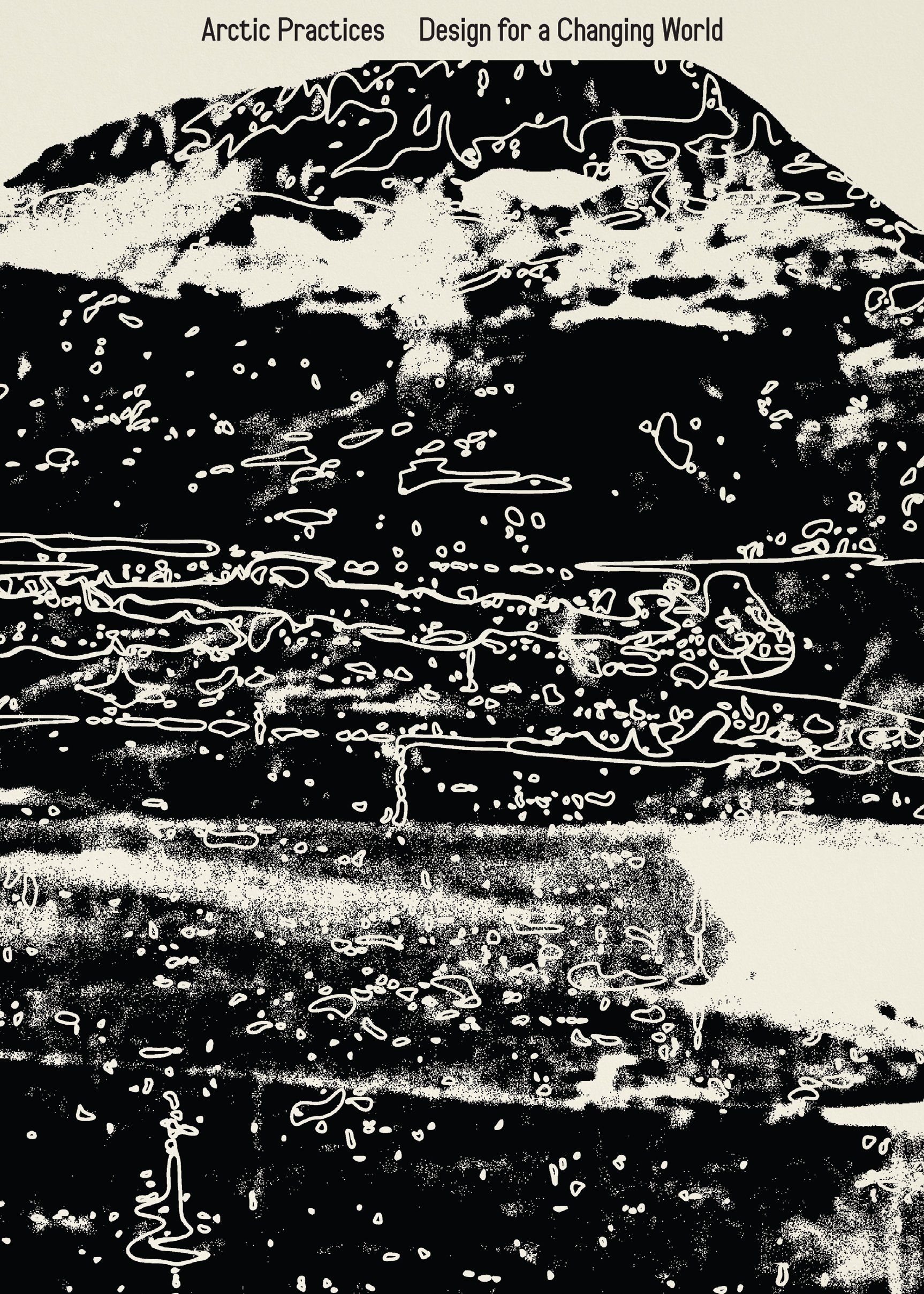
Eds. Bert De Jonghe & Elise Misao Hunchuck
Contributor Susan Schuppli
Arctic Practices: Design for a Changing World emerges at a critical juncture wherein the very stability of Arctic ecosystems hangs in a precarious balance induced, almost entirely, by humans. This volume assembles forty-six contributors—designers, educators, artists, photographers, filmmakers, some Indigenous, some residents, and some visitors to the Circumpolar North—to create a polyvocal assembly of Arctic practices. As a geographical reality, conceptual framework, and region with shared physical characteristics, the Arctic emerges from a complex intersection of Indigenous knowledge systems, colonial histories, and scientific paradigms. From early Greek measurements of Polaris’s position to today’s satellite monitoring of rapidly retreating ice sheets, understanding of this region has been shaped by successive waves of external observation and internal resistance. This tension between ways of knowing—between Traditional Knowledge holders and (often Western) scientific frameworks—lies at the heart of contemporary Arctic discourse and design practice.
Actar Books
Contributor Susan Schuppli
Arctic Practices: Design for a Changing World emerges at a critical juncture wherein the very stability of Arctic ecosystems hangs in a precarious balance induced, almost entirely, by humans. This volume assembles forty-six contributors—designers, educators, artists, photographers, filmmakers, some Indigenous, some residents, and some visitors to the Circumpolar North—to create a polyvocal assembly of Arctic practices. As a geographical reality, conceptual framework, and region with shared physical characteristics, the Arctic emerges from a complex intersection of Indigenous knowledge systems, colonial histories, and scientific paradigms. From early Greek measurements of Polaris’s position to today’s satellite monitoring of rapidly retreating ice sheets, understanding of this region has been shaped by successive waves of external observation and internal resistance. This tension between ways of knowing—between Traditional Knowledge holders and (often Western) scientific frameworks—lies at the heart of contemporary Arctic discourse and design practice.
Actar Books
Patriotism to the Earth
A Quest for Humane Global Governance 2025

Richard A Falk with Sasha Milonova
This book of essays is preoccupied with the contrast between prevailing loyalty to the sovereign state—patriotism—and an emergent alternative of loyalty to the species and its natural habitat. Such an orientation toward ecological patriotism focuses on conditions of human survival, ecological stability, and cosmological awareness in the Age of the Anthropocene. It is a patriotism guided by empirical and normative assessments regarding the deficiencies of the existing world order and its inability to provide the biological, economic, political, ecological, cultural, ethical, and spiritual foundations for the future viability of life on earth.
Patriotism to the Earth
This book of essays is preoccupied with the contrast between prevailing loyalty to the sovereign state—patriotism—and an emergent alternative of loyalty to the species and its natural habitat. Such an orientation toward ecological patriotism focuses on conditions of human survival, ecological stability, and cosmological awareness in the Age of the Anthropocene. It is a patriotism guided by empirical and normative assessments regarding the deficiencies of the existing world order and its inability to provide the biological, economic, political, ecological, cultural, ethical, and spiritual foundations for the future viability of life on earth.
Patriotism to the Earth
Dead Ends
MARA 2023-24
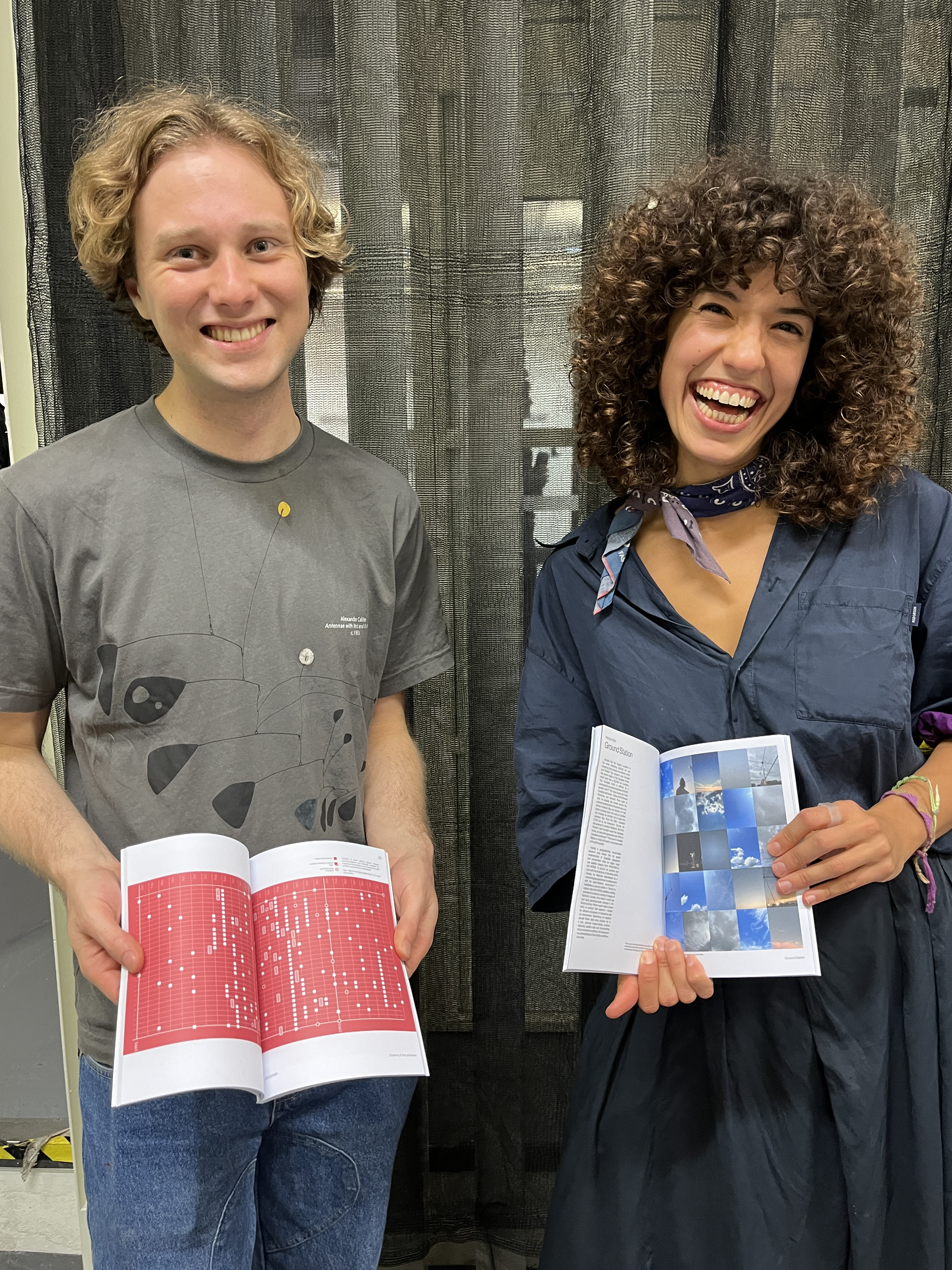

To conduct research politically — that is, to search, read, listen, look against the grain of epistemic power — requires that we risk drawing blanks. Each investigation, each body of research produced at the Centre is also a “particular bundle of silences,” as Michel-Rolph Trouillot said of historical narratives,1 even as it grows arounds the structural limits of its knowledge. Data may be classified, limited in access, destroyed, uncollected, unthought; researchers have finite and variable amounts of resources, access, even energy; sometimes these limitations are absolute.
In Dead Ends, students, teachers, and friends of the Centre for Research Architecture will confront the lines of inquiry within their research that ran dry, or were cut off—but produce something else through the critical examination of these “ends.” How do we make these ends operative, use them to carve out new investigative routes? In Saidiya Hartman’s words, how do we “reckon with loss” and “respect the limits of what cannot be known” and yet “dramatize the production of nothing— empty rooms, and silence, and lives reduced to waste”?2
The final clause of Hartman’s phrase challenges us to realize the polysemy of our title—to link the silences within the archive to the mortal extremities of (more- than-) human existence that are, so often, the object of our research. “Dead ends” might also refer to the act of killing, to the apocalyptic teleology of nuclear power, to impending ecological collapse.
What do we do with such ends, in all senses of the word? How do we work in their long afterlives, or struggle against their eventuality?
Read Dead Ends
In Dead Ends, students, teachers, and friends of the Centre for Research Architecture will confront the lines of inquiry within their research that ran dry, or were cut off—but produce something else through the critical examination of these “ends.” How do we make these ends operative, use them to carve out new investigative routes? In Saidiya Hartman’s words, how do we “reckon with loss” and “respect the limits of what cannot be known” and yet “dramatize the production of nothing— empty rooms, and silence, and lives reduced to waste”?2
The final clause of Hartman’s phrase challenges us to realize the polysemy of our title—to link the silences within the archive to the mortal extremities of (more- than-) human existence that are, so often, the object of our research. “Dead ends” might also refer to the act of killing, to the apocalyptic teleology of nuclear power, to impending ecological collapse.
What do we do with such ends, in all senses of the word? How do we work in their long afterlives, or struggle against their eventuality?
Read Dead Ends
Supply Nets: The Logistics of Seafarer Abandonment
Jacob Bolton
March 2024

This essay studies the infrastructural and organisational forms that facilitate labour exploitation within maritime logistics. The entry point is the rising wave of sea-farer abandonments, which I approach not as isolated incidents of mismanagement but as an intensification of the flexibilising tendencies underpinning contemporary capitalism. Tracing the recent history of these dynamics, examining their effect on shipping labour. Jacob Bolton goes onto investigate some of the specific legal and economic mechanics of shipping, focusing on debt, insurance, and bordering. Using supply chain mapping software, he studies supply systems in a way that centres labour rather than the commodities being moved. By claiming that abandonments are not an accident, but an inevitable endpoint of a system designed to precaritise labour while protecting shipowners’ profits Bolton sketches out a new way of conceiving of supply chains—as supply nets, matrices of interconnected lines, prone to becoming tangled.
Read Supply Nets: The Logistics of Seafarer Abandonment
Read Supply Nets: The Logistics of Seafarer Abandonment
PARA-PEDAGOGY refers to student initiated activist projects & peer-to-peer networks
Learning from Stuart Hall
2014
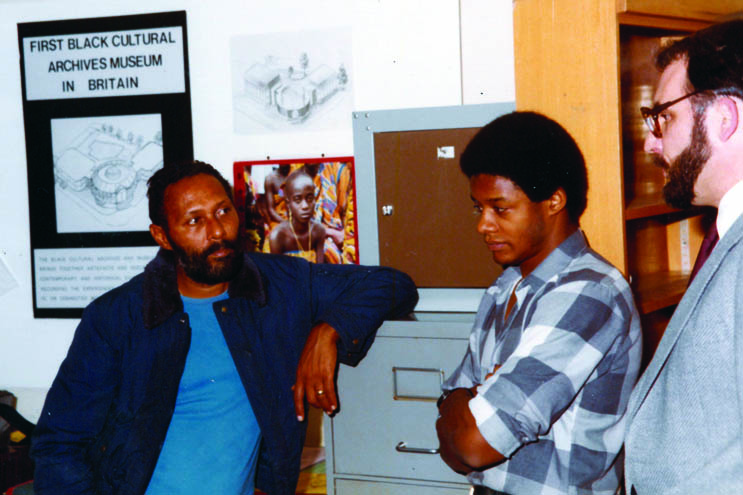
Listen to Stuart Hall keynote address at Autograph here:
Working with materials sourced from a wide variety of archives and contexts, the PhD students created an exhibition that explores the intellectual, activist, and pedagogical contributions of Stuart Hall. Along the ground-floor corridor the students question what itmeans to name a building after a person. This was investigated through an examination of the architectural blueprint of the former New Academic Building now re-named the Professor Stuart Hall Building as well as the Goldsmiths Master Plan 2009-2019, which maps the university’s projection of itself into the future. On the lower-ground floor the exhibition interrogates the “Research Excellence Framework” which quantifies and evaluates academic outputs, assesses their impacts and ranks the university’s overall production of value. These schematised metrics, that increasingly define contemporary academic work, are counter-posed by a broad range of materials drawn from Stuart Hall’s influential career as a founderof cultural studies, teacher, writer, publisher, and activist to raise questions about the natureof the “new academic”
Visit website here
Read the publication here
Visit website here
Read the publication here
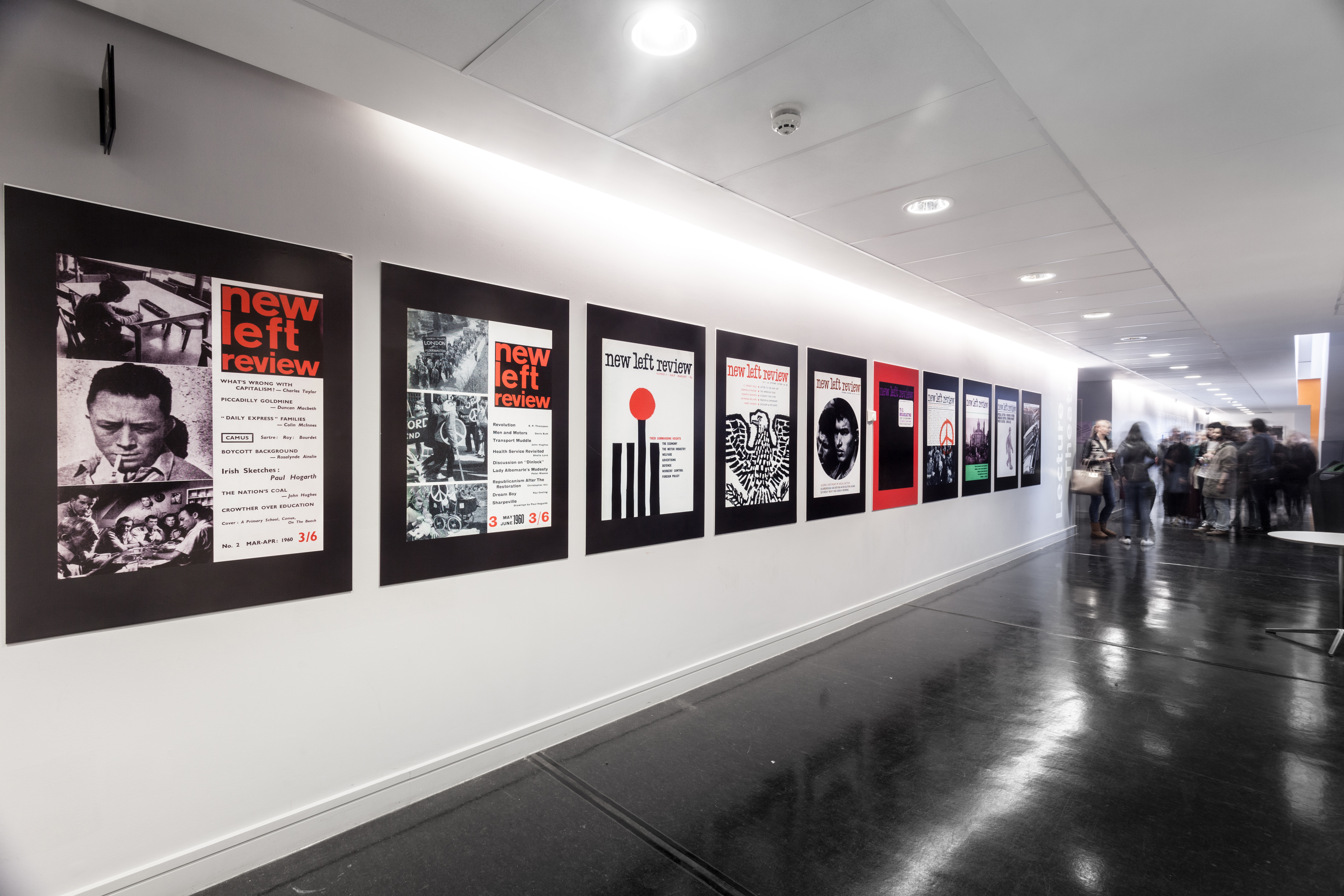


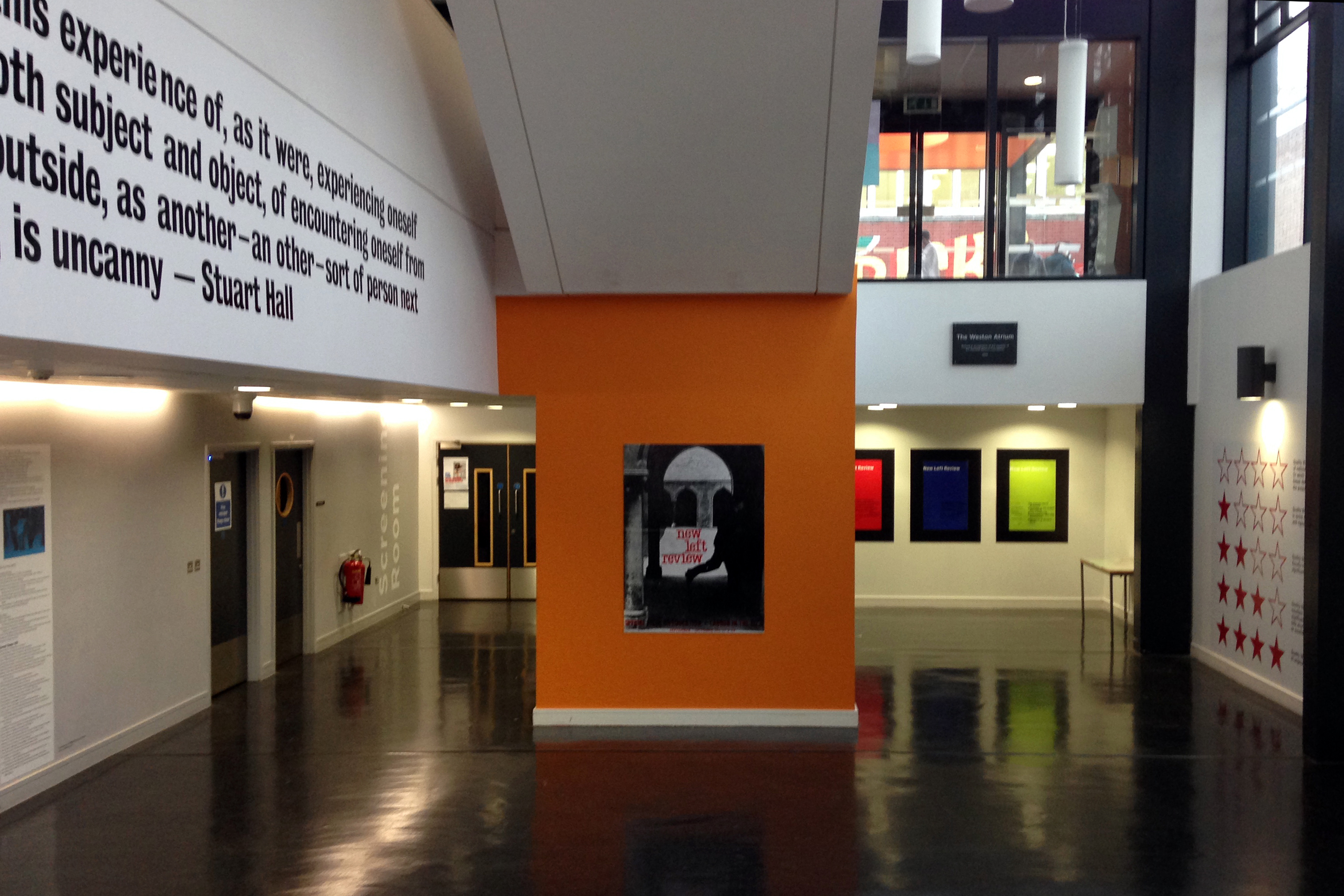
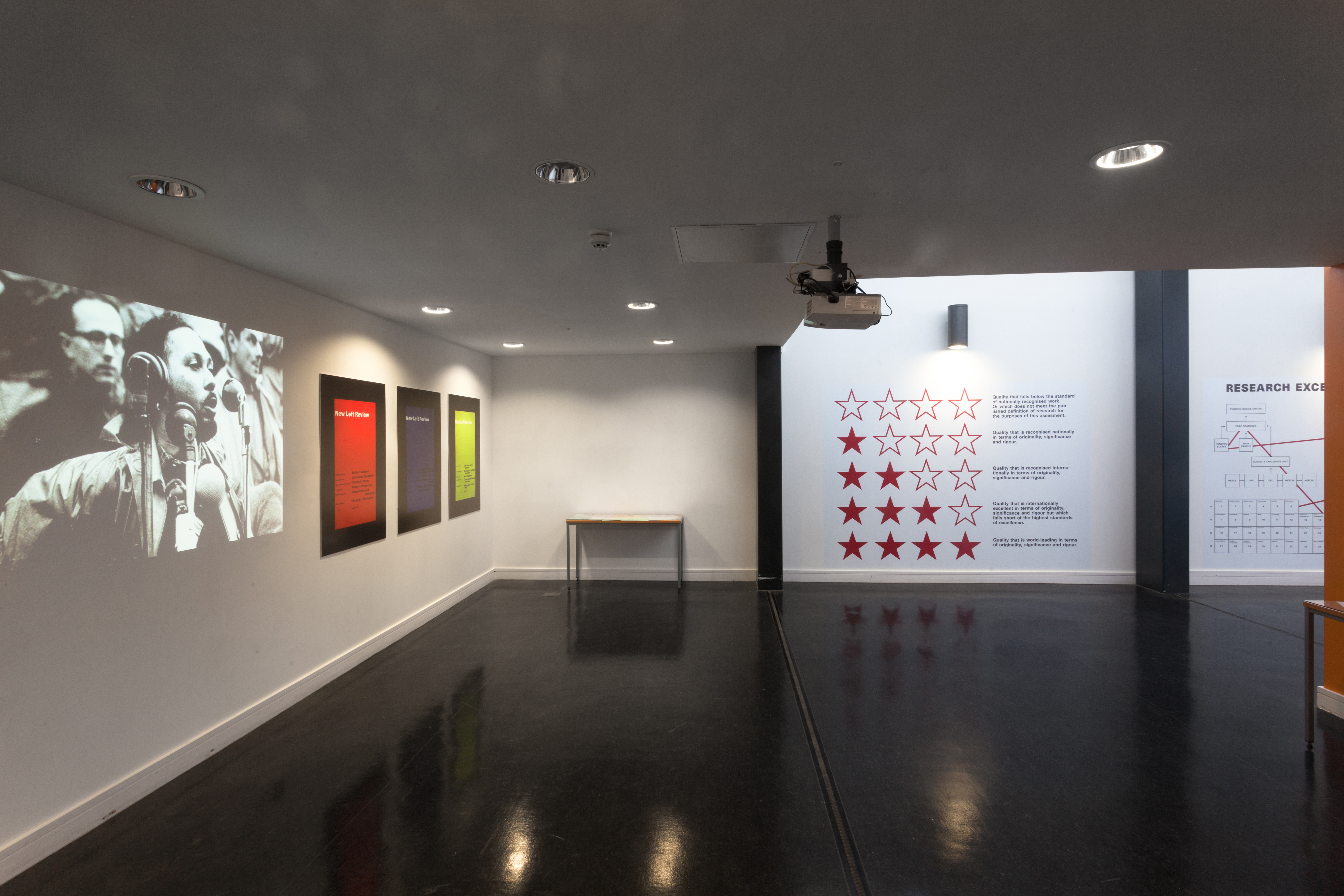
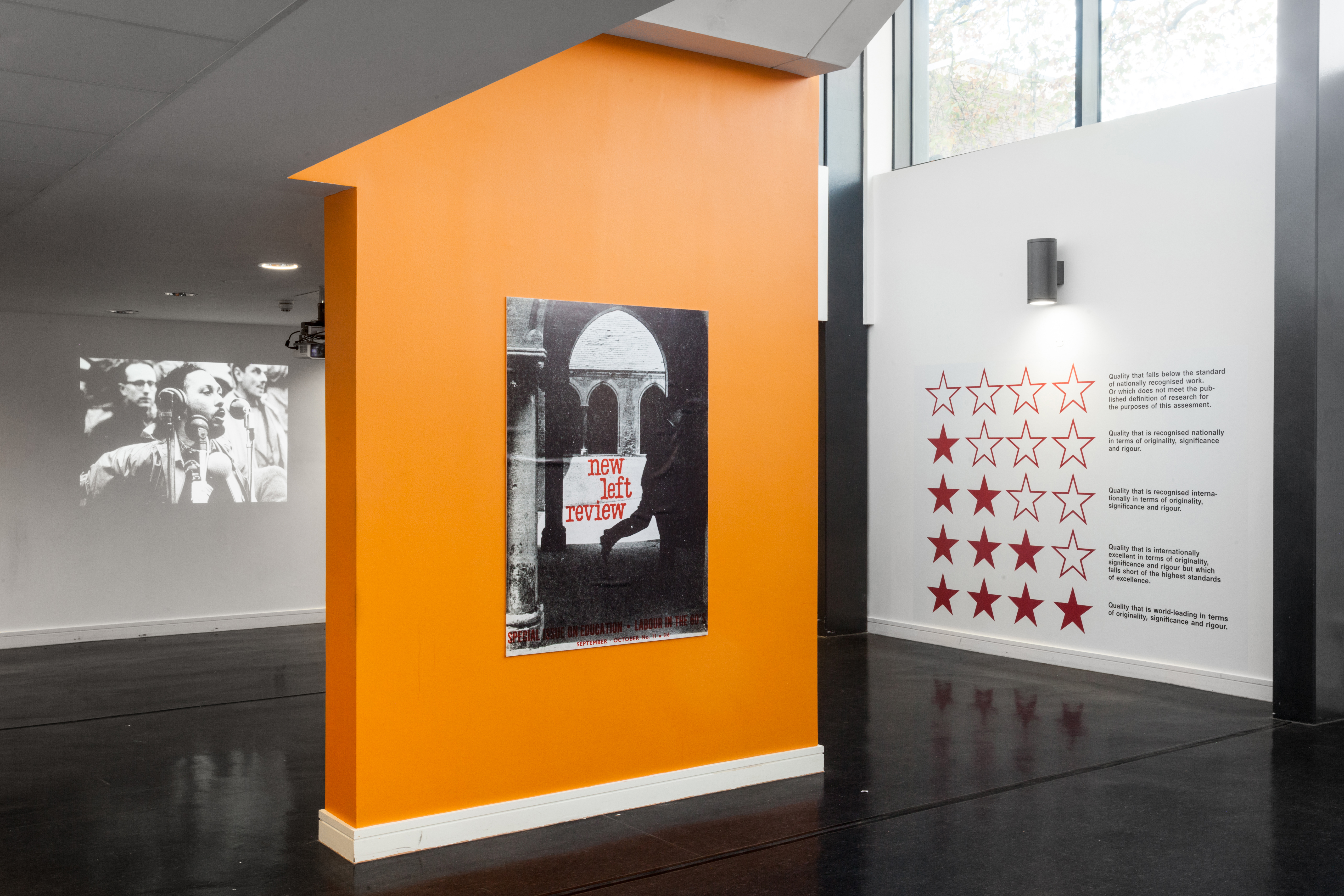
Free Seminars
2015+
The Free Seminar began in 2015 as an ad-hoc space for student-led symposia, discussions and workshops. We met weekly with the idea of creating an environment, outside of the timetabled curriculum, to talk freely and to self-organise. Free Seminar is a community of sorts – one that is always shifting in numbers and people. Essentially it gives us reason to spend time together and learn from each other. Participants have joined us from various programmes at Goldsmiths, including MAs from the Centre for Research Architecture and students from across the Visual Cultures and Cultural Studies BA, MA, MRes and PhD programmes.
The sessions would change in format and focus, but the basic idea is: each one, teach one. We had a mixture of reading groups, film screenings and Free Seminars, where different members of the group would arrange to invite speakers, hold workshops and have discussions that overflow and augment. In other words, we all contribute something in whatever way we want.
As the meetings were at the end of the day, we arranged that each one would be a Potluck – where everyone would bring food to share with the rest of the group.
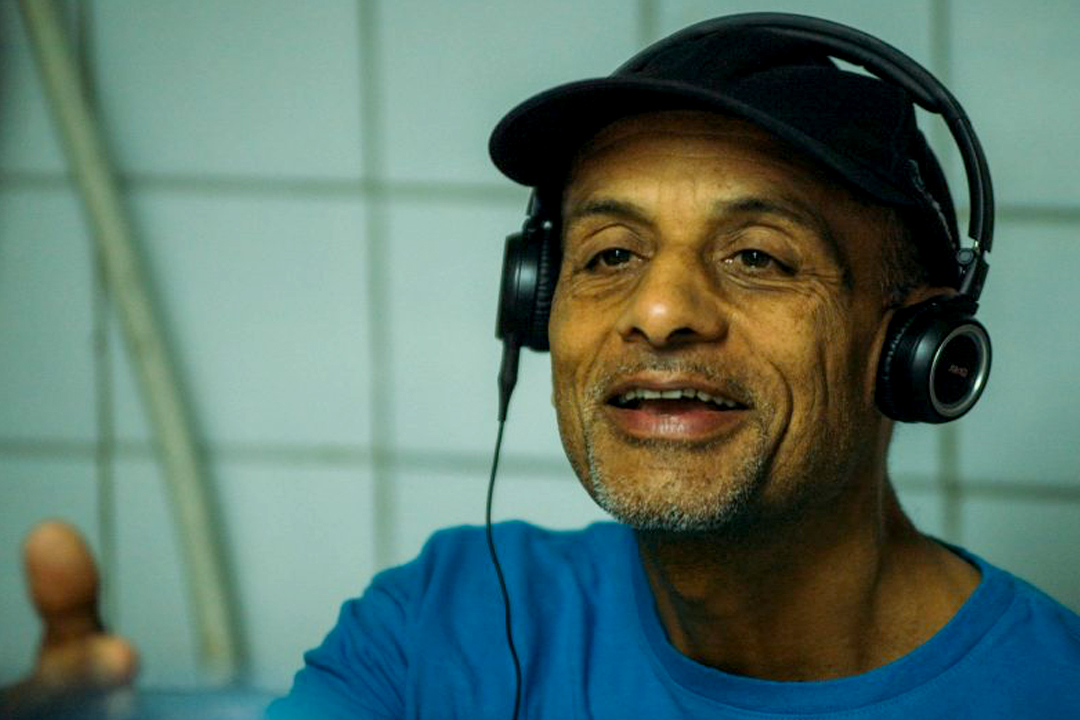

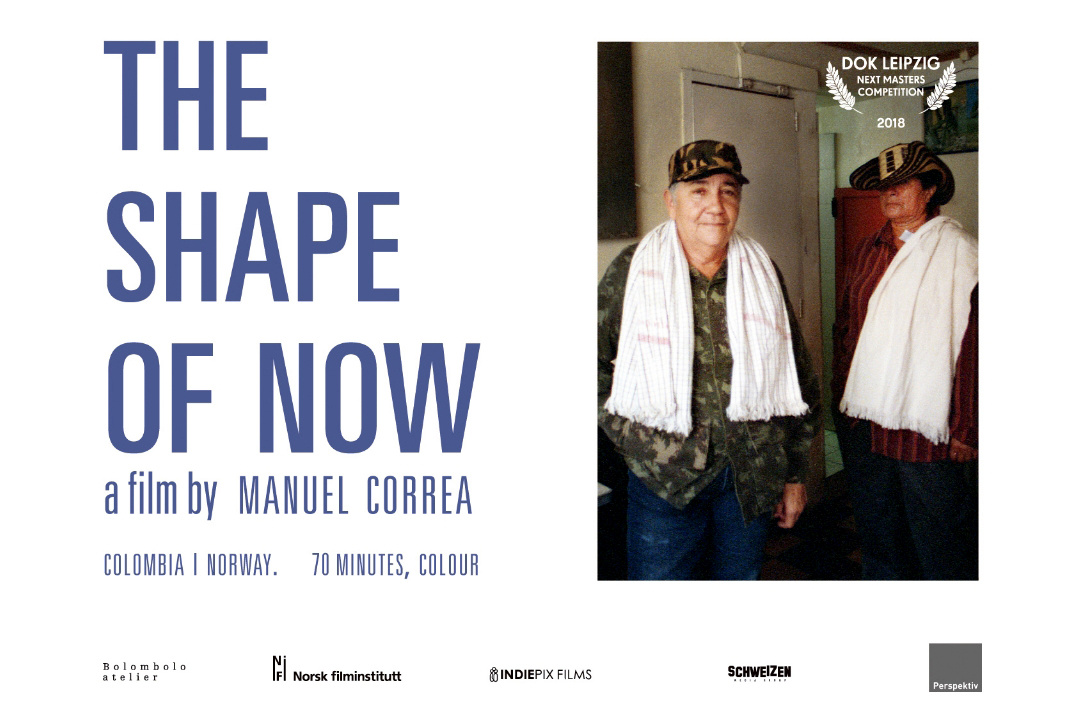


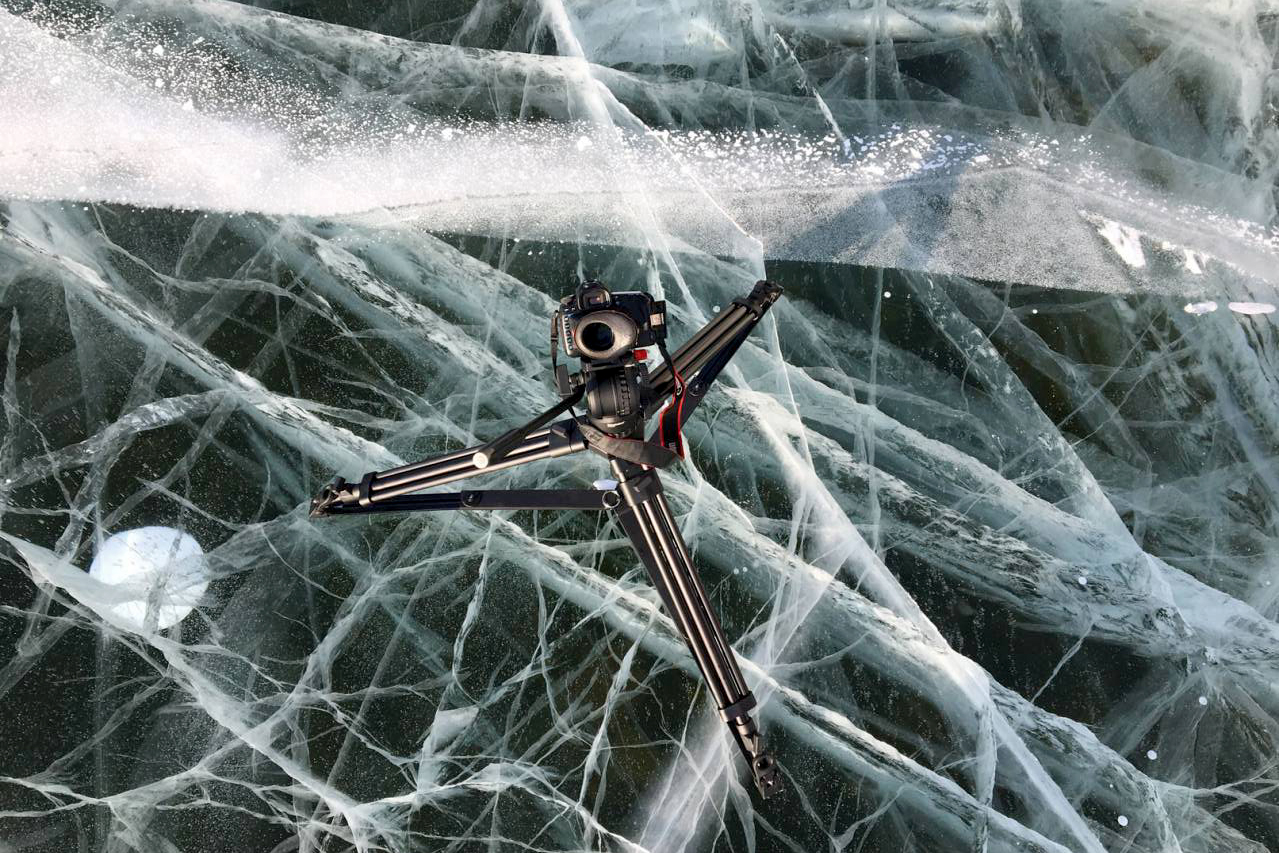


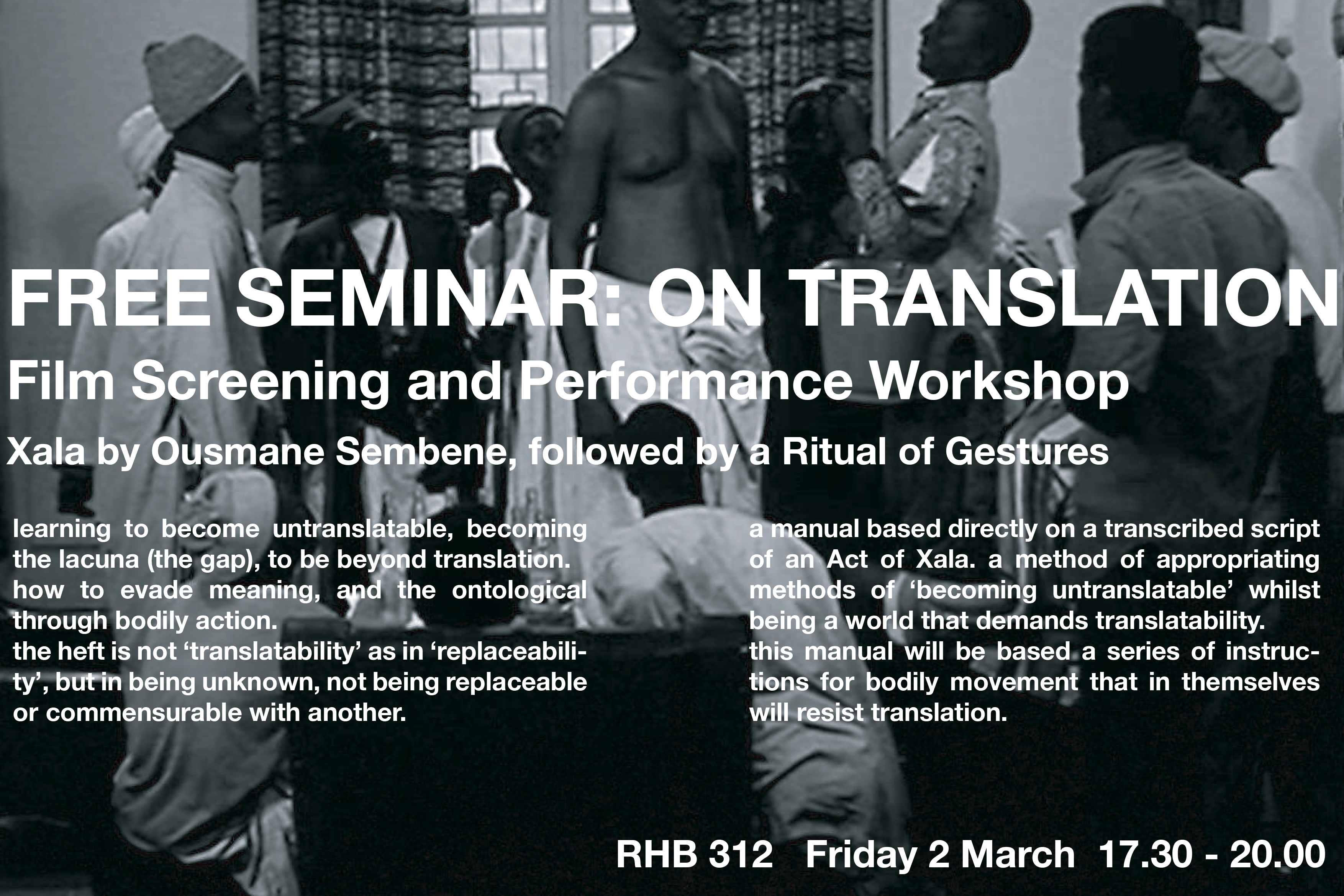

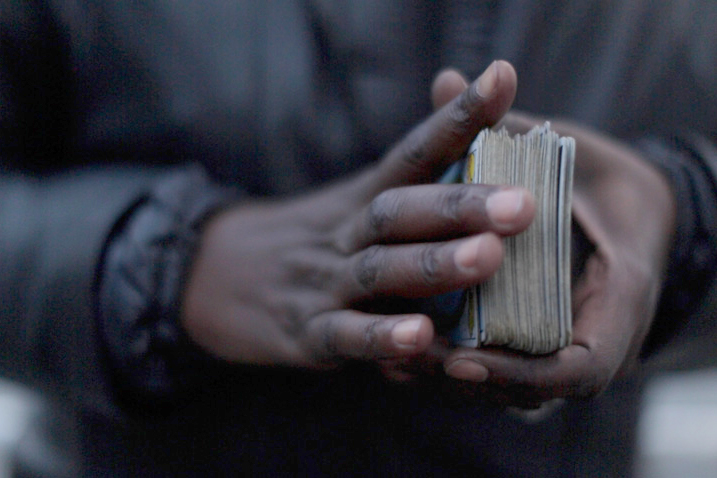

2020
This year's focus for The Free Seminar is "Novel Research Methods" that creates space for the demonstration and discussion of experimental methods. The programme will realise a series of workshops led by practitioners and field specialists, including on: listening and sound walking, rhythms and vibrations, fieldnotes, and open source investigation.
30 July 2020
Novel Research Methods Open Source Investigation – workshop with Bob Trafford . Watch Free Seminar here
Novel Research Methods Fieldnotes in Practice with Juliet Sprake. Watch Free Seminar here
28 July 2020
Rhythms, Relationalities and Vibrations with Julian Henriques. An introduction to rhythms and vibrations as the periodic patterning of performance, gesture and transformation. Watch Free Seminar here
23 July 2020
Sonic Methods and Acoustic Ecology with John Drever. An interactive session on sonic methods from an acoustic ecology perspective. Watch Free Seminar here
Everydayness Listening Exercise in Soundscape Composition: Listening to Context and Contingency, 2019. PDF
25 February 2019
Screening and Discussion of The Shape of Now, a film by Manuel Correa, 2018, 70 mins.
23 July 2019
Anatomy of Ice: Research and Ephemerality. Artist Hannah Rowan has just returned from the Arctic Circle Residency and will reflect on her recent exhibition at Assembly Point in Peckham in relation to new material she is creating out of her latest trip, which she will preview. “I would also like to open up the discussion for us to think about our many different ways of gathering research (through various disciplines) alongside the ethics of how we approach working in a place we have not previously encountered.”
28 June 2018
Radio Techno Fossil workshop with Sasha Engelmann and Sophie Dyer. Radio Techno Fossil tells the story of a radio-image as it traverses the bounds of the Earth’s surfaces, atmospheres and techno-geographies. At 0.2 Hz scien3sts in the Finnish arc3c listen for Very Low Frequencies that index industrial, military and cosmic ac3vity. At 2.4 GHz ac3vists prototype Wi-Fi kits for use in European refugee camps and by sea rescue vessels. At 30 GHz the radio relays of financial traders amass at the French port of Calais. This is a poli3cs of frequencies. A parallel wireless world, on which our contemporary moment is contingent.
19 June 2018
Louis Moreno on Althusser’s footnote. In a cryptic footnote in Reading Capital, Louis Althusser asks what role do spatial metaphors play in theorising capitalism as a ‘real’ system of economic power. In this free seminar we’ll explore this question (by way of Stuart Hall) asking, how does space constitute the imaginary grounds upon which the power of capitalism is realised?
Suggested readings:
Louis Althusser, "From Capital to Marx's Philosophy" in Reading Capital; the Complete Edition, 9-26.
Stuart Hall, "Ideology and Ideological Struggle" in Cultural Studies 1983, Jennifer Daryl Slack and Lawrence Grossberg eds.
28 April 2018
Superluminal Blues. Free Seminar with the artist, Jol Thompson and curator, Dan Meththananda. Screening of G24|0vßß (2016) shot at the Cryogenic Underground Observatory for Rare Events at Laboratori Nazionali del Gran Sasso in central Italy. The film is set in a larger apparatus that descends into a thermal zone near absolute zero and sits in a clear field of cosmic silence — the required environment for rendering neutrinos detectable. As Jol would put it, neutrino detection becomes an “expression of entanglement in the liminal spaces between subatomic particles, an ice shelf, digital sensors, human labor and curiosity, equations, hypotheses, and vast technological and bureaucratic architectures." Following the screening, Jol will present new raw material from his recent expedition to Siberia at the laboratory-landscape, neutrino sensing device, the Gigaton Volume Detector at Lake Baikal. As part of this presentation and in the vein of the artist's diffracted research, he and curator-writer Dan Meththananda open an "entangled" discussion around, and from within Jol's post-human ethnographic film practice.
23 March 2018
“Rurality Reimagined”. Following 'the ecological thought' of Timothy Morton via Arthur Schopenhauer's problematic claim that art provides an escape route from reality to a space-time of pure 'knowledge', Wood Roberdeau will discuss the cultural turn towards political ecology as examined through selected agricultural art projects by John Gerrard, Gianfranco Baruchello, Atelier Van Lieshout, Futurefarmers and Fernando García-Dory.
8 March 2018
This week Free Seminar hosts our very own Susan Schuppli who is screening a film from her ongoing project Material Witness that examines a series of media artefacts, which have emerged out of situations of contemporary conflict and historical violence. The project tracks these media materials through the various public and legal forums in which they participate as corroborative or disputed forms of “evidence” such as the ICTY, the UN, International Atomic Energy Agency and COP15. Rather than focusing entirely upon the content of such media as might be expected, the project also explores the ways in which crisis is registered as a “material violation” itself.
2 March 2018
A Free Seminar on Translation. Film screening and performance workshop. Xala by Ousmane Sembene, followed by a Ritual of Gestures. Learning to become untranslatable, becoming the lacuna (the gap), to be beyond translation. How to evade meaning, and the ontological through bodily action. The heft is not ‘translatability’ as in ‘replaceability’, but in being unknown, not being replaceable or commensurable with another. A manual based directly on a transcribed script of an Act of Xala. a method of appropriating methods of ‘becoming untranslatable’ whilst being a world that demands translatability. This manual will be based a series of instructions for bodily movement that in themselves will resist translation.
14 February 2018
Free Seminar session with Irit Rogoff to discuss her notion of 'free knowledge'.
Read E-Flux article here
9 February 2018
Free Seminar | Parallel School with MARA alumni Sophie Dyer and Robert Preusse to talk about Parallel School, an initiative they were part of that explored the possibilities of learning together. Parallel School belongs to no one. Parallel School has no location. Parallel School is not teaching. Parallel School is learning.
31 February 2017
Film screening and discussion of Serpent Rain with artist Arjuna Neuman. Serpent Rain is as much an experiment in working together as it is a film about the future. The collaboration began with the discovery of a sunken slave ship, and an artist asking a philosopher – how do we get to the post-human without technology? And the philosopher replying – maybe we can make a film without time. The result is a video that speaks from inside the cut between slavery and resource extraction, between black lives matter and the matter of life, between the state changes of elements, timelessness and tarot. Together we ask: what becomes of the human if expressed by the elements? Serpent Rain is a collaboration with Denise Ferreira Da Silva and commissioned by Stefano Harney (freethought) for The Bergen Assembly, 2016
Teach Outs
2018



During the UCU Industrial Action in 2018, students pickted in solidarity with staff and organised a wide-ranging programme of “teach outs” which are highlighted in this student-produced zine. Included as well are critical commentaries and other resources related to protest in Higher Education.
Read Picket Realism: Zine about UCU Strikes proudced by Faiza Ahmad Khan here
Read Picket Realism: Zine about UCU Strikes proudced by Faiza Ahmad Khan here
Calais, Capital and an Electromagnetic Commons
2016
The electromagnetic spectrum is an example of a resource held in common that is governed in different ways, to very different effect. Calais’ electromagnetic milieu tells of the extreme environments of financial capitalism and the logics, resources and infrastructures that weather them.
In 2015 Jangala installed its first prototype Wi-Fi network in the informal camp near Calais, France. While active, the improvised network provided free Internet access to the camps’ estimated 7,000 residents, who otherwise had to rely on costly data-packages.
Since Calais, Jangala has evolved into a charity, developing low-cost Internet access systems for use in emergency situations around the world.
Guide written in collaboration with Richard Thanki
Project by Sophie Dyer & Jangala
In 2015 Jangala installed its first prototype Wi-Fi network in the informal camp near Calais, France. While active, the improvised network provided free Internet access to the camps’ estimated 7,000 residents, who otherwise had to rely on costly data-packages.
Since Calais, Jangala has evolved into a charity, developing low-cost Internet access systems for use in emergency situations around the world.
Guide written in collaboration with Richard Thanki
Project by Sophie Dyer & Jangala





